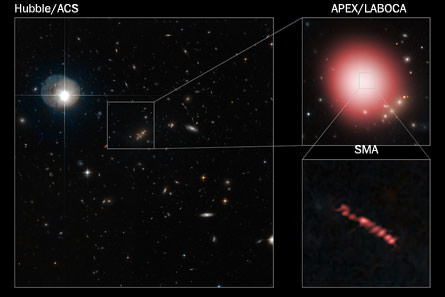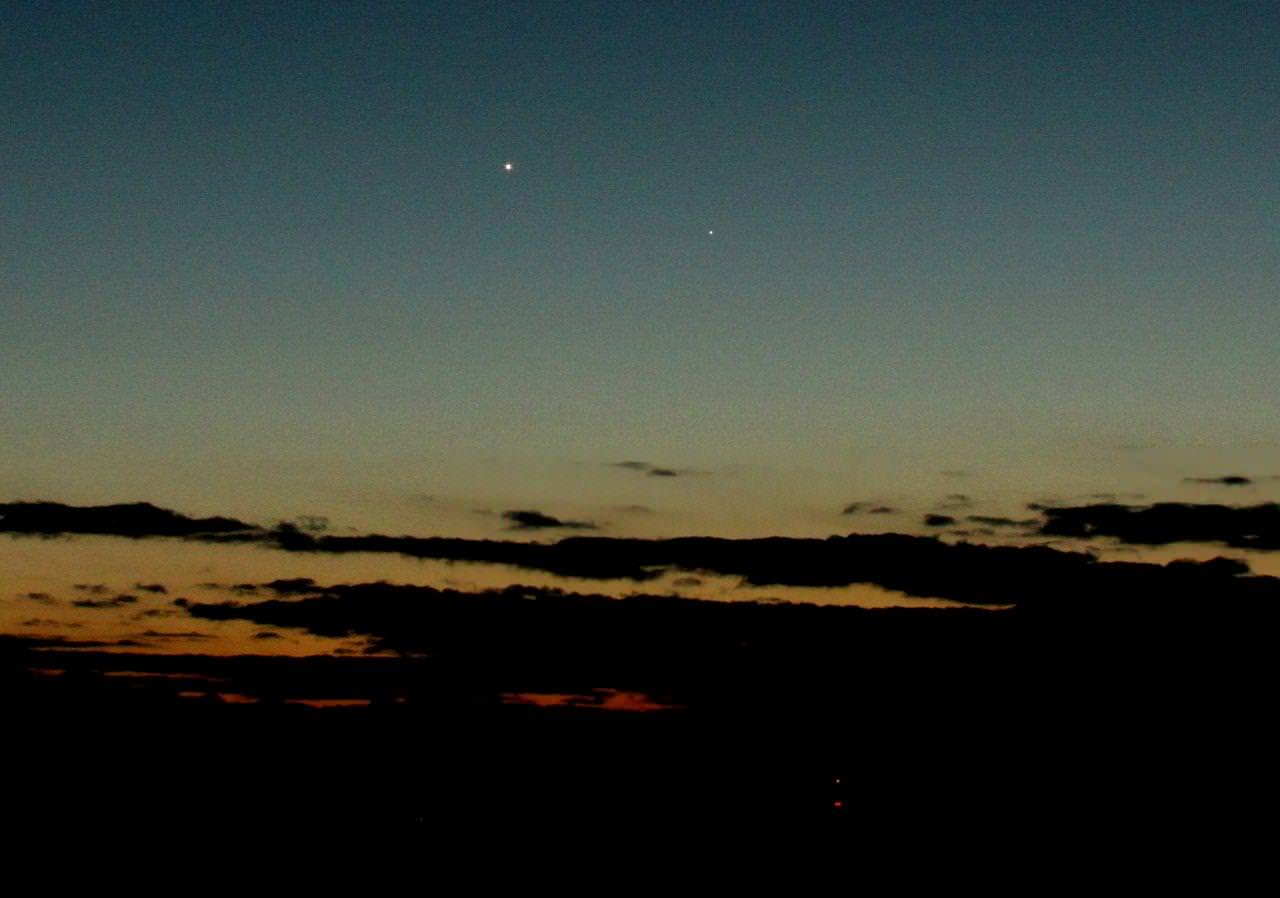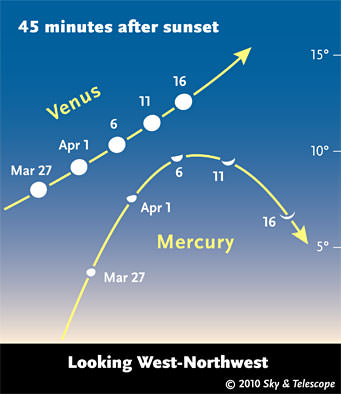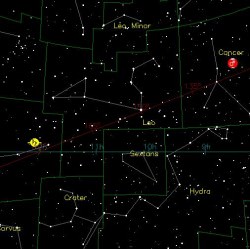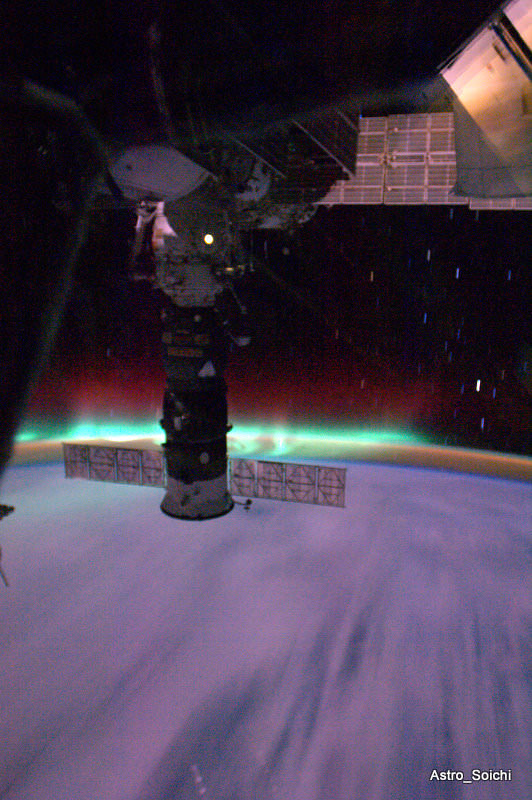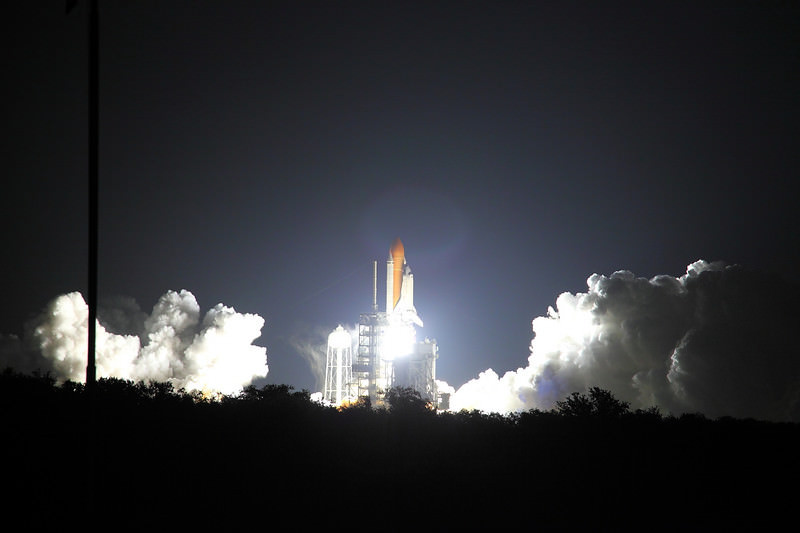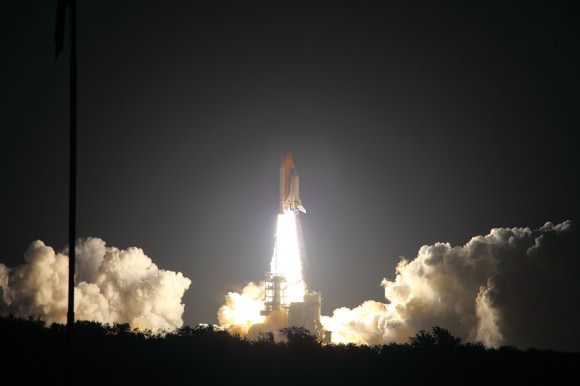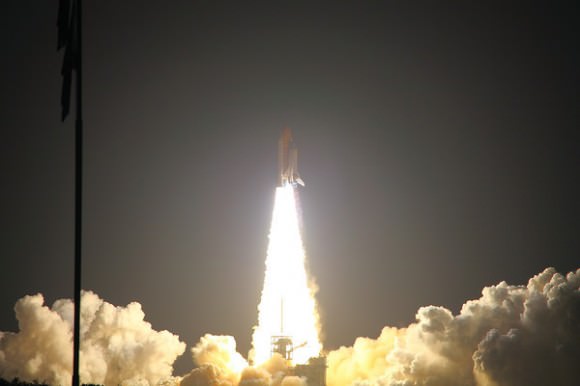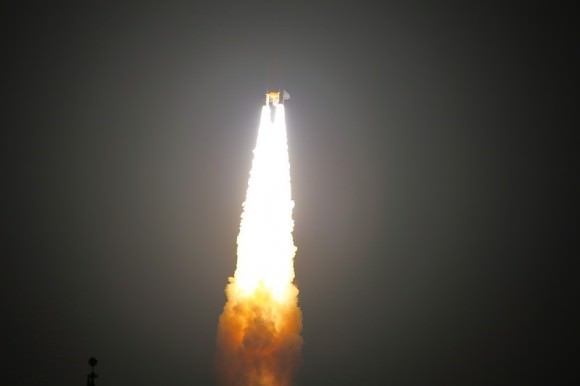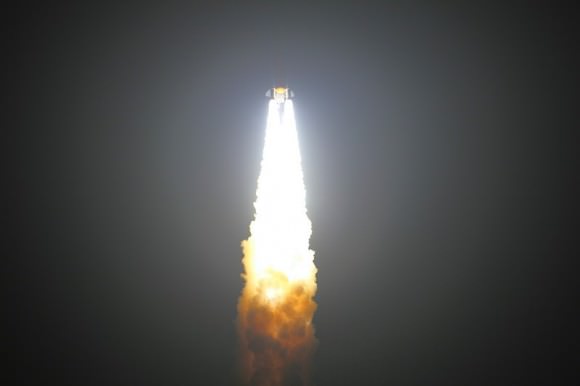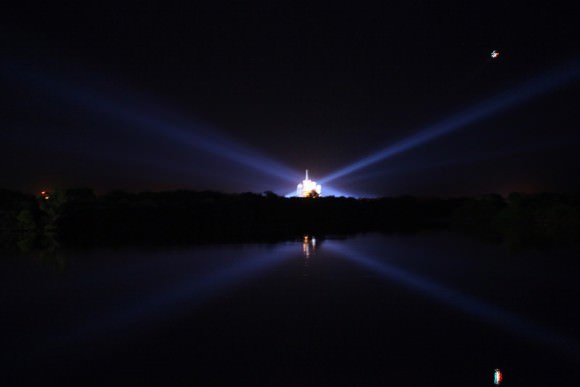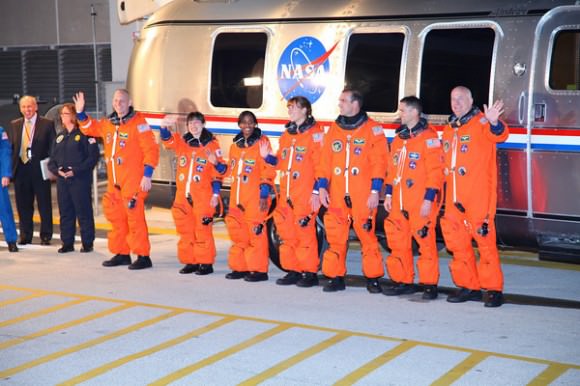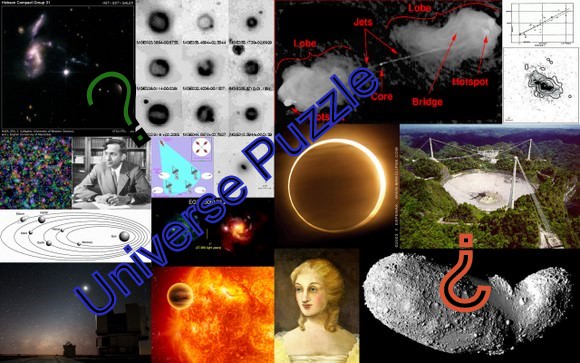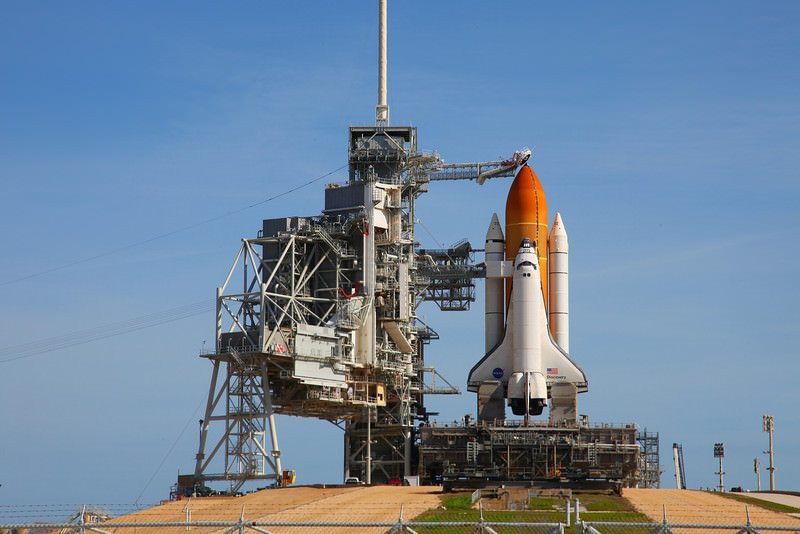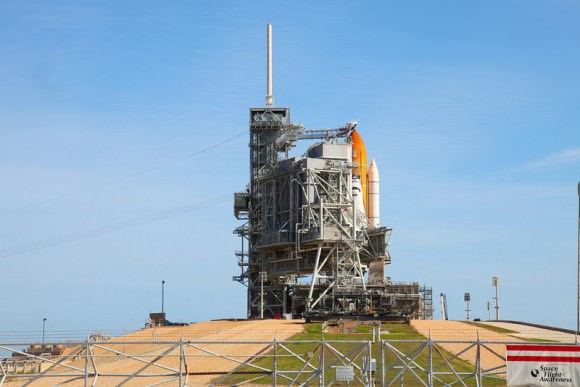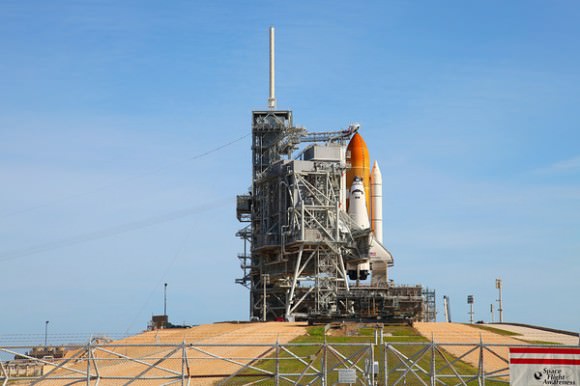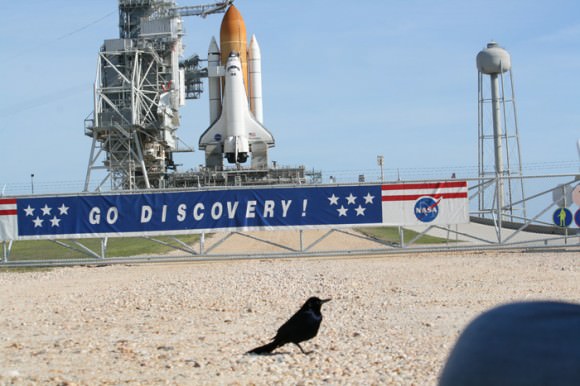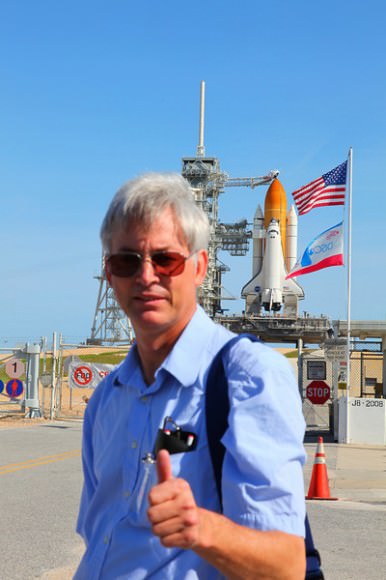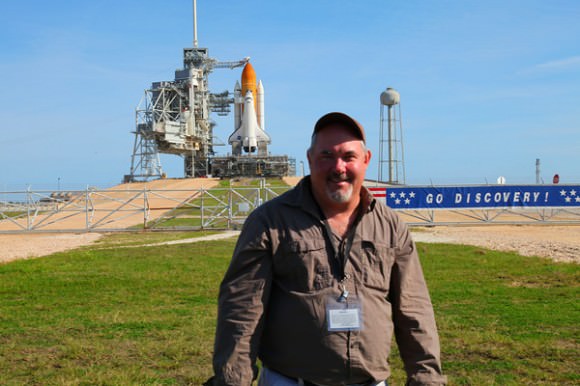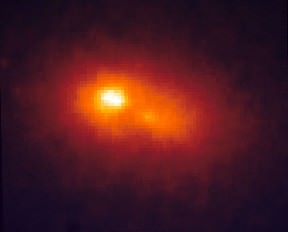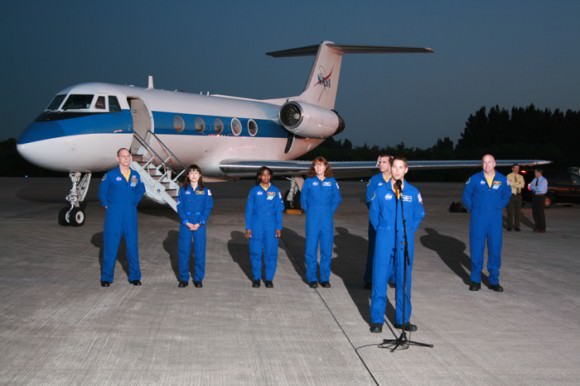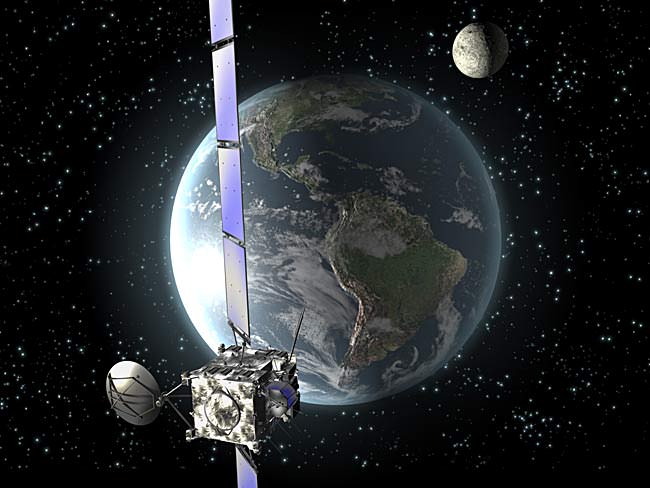[/caption]
Einstein started it all, back in 1915.
Eddington picked up the ball and ran with it, in 1919.
And in the last decade or so astronomers have used a MACHO to OLGE CASTLES … yes, I’m talking about gravitational lensing.
Now LABOCA and SABOCA are getting into the act, using Einstein’s theory of general relativity to cast a beady eye upon star birth most fecund, in a galaxy far, far away (and long, long ago).
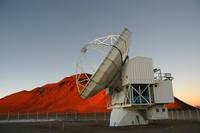
How galaxies evolved is one of the most perplexing, challenging, and fascinating topics in astrophysics today. And among the central questions – as yet unanswered – are how quickly stars formed in galaxies far, far away (and so long, long ago), and how such star formation differed from that which we can study, up close and personal, in our own galaxy (and our neighbors). There are lots of clues to suggest that star formation happened very much faster long ago, but because far-away galaxies are both dim and small, and because Nature drapes veils of opaque dust over star birth, there’s not much hard data to put the numerous hypotheses to the test.
Until last year that is.
“One of the brightest sub-mm galaxies discovered so far,” say a multi-national, multi-institution team of astronomers, was “first identified with the LABOCA instrument on APEX in May 2009” (you’d think they’d give it a name like, I don’t know, “LABOCA’s Stunner” or “APEX 1”, but no, dubbed “the Cosmic Eyelash”; formally it’s called SMMJ2135-0102). “This galaxy lies at [a redshift of] 2.32 and its brightness of 106 mJy at 870 μm is due to the gravitational magnification caused by a massive intervening galaxy cluster,” and “high resolution follow-up with the sub-mm array resolves the star-forming regions on scales of just 100 parsecs. These results allow study of galaxy formation and evolution at a level of detail never before possible and provide a glimpse of the exciting possibilities for future studies of galaxies at these early times, particularly with ALMA.” Nature’s telescope giving astronomers ALMA-like abilities, for free.
OK, so what did Mark Swinbank and his colleagues find? “The star-forming regions within SMMJ2135-0102 are ~100 parsecs across, which is 100 times larger than dense giant molecular cloud (GMC) cores, but their luminosities are approximately 100 times higher than expected for typical star-forming regions. Indeed, the luminosity densities of the star-forming regions within SMMJ2135-0102 are comparable to dense GMC cores, but with luminosities ten million times larger. Thus, it is likely that each of the star-forming regions in SMMJ2135-0102 comprises ~ten million dense GMC cores.” That’s pretty mind-blowing; imagine the Orion Nebula (M42, approximately 400 parsecs distant) as one of these star-forming regions!
James Dunlop of the University of Edinburgh suggests that such galaxies as SMMJ2135-0102 formed stars so abundantly because the galaxies still had plenty of gas – the raw material for making stars – and the gravity of the galaxies had had enough time to pull the gas together into cold, compact regions. Before about 10 billion years ago, gravity hadn’t yet drawn enough clumps of gas together, while at later times most galaxies had already run out of gas, he suggests.
But I’m saving the best for last: “the energetics of the star-forming regions within SMMJ2135-0102 are unlike anything found in the present day Universe,” Swinbank et al. write (now there’s an understatement if ever I’ve heard one!), “yet the relations between size and luminosity are similar to local, dense GMC cores, suggesting that the underlying physics of the star-forming processes is similar. Overall, these results suggest that the recipes developed to understand star-forming processes in the Milky Way and local galaxies can be used to model the star formation processes in these high-redshift galaxies.” It’s always good to get confirmation that our understanding of the physics at work so long ago is consistent and sound.
Einstein would have been delighted, and Eddington too.
Sources: “Intense star formation within resolved compact regions in a galaxy at z = 2.3” (Nature), “The Properties of Star-forming Regions within a Galaxy at Redshift 2” (ESO Messenger No. 139), Science News, SciTech, ESO. My thanks to debreuck (ESO’s Carlos De Breuck?) for setting the record straight re the name.

